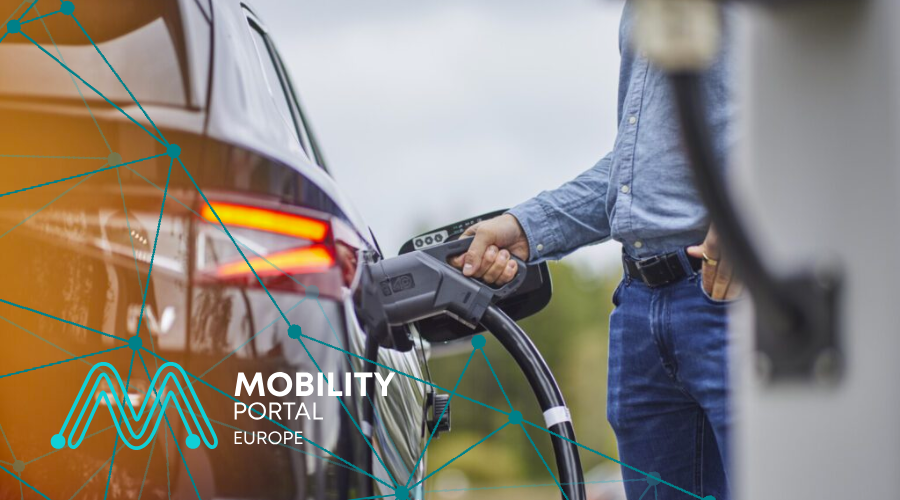Europe surpassed the milestone of one million public charging points by the end of the first quarter of 2025, marking a significant advancement in the continent’s electric vehicle (EV) infrastructure. According to the European Market Monitor: Cars and Vans (March 2025) report published on 30 April 2025 by Michelle Monteforte and Sonsoles Diaz, this expansion includes a 28% increase in alternating current (AC) chargers and a 54% rise in direct current (DC) fast chargers compared to the first quarter of 2024.
This growth enhances the accessibility and speed of recharging for EV users, which is crucial in overcoming one of the main barriers to EV adoption: range anxiety. By the end of March 2025, approximately 81% of public chargers supplied AC power, while the remaining 19% were DC fast chargers.
Countries leading this expansion include Denmark, which saw a remarkable 104% increase in DC chargers, followed closely by Belgium with a 92% increase in DC chargers and a 60% rise in AC chargers.
On average, Europe had 7.2 publicly accessible 22 kW-equivalent charging points per thousand passenger cars and vans, up from 6.5 at the end of 2024. However, significant disparities persist between countries. Norway remains the leader with nearly 46 charging points per thousand vehicles, followed by Iceland (35), Denmark (30), and Sweden (22). Conversely, Italy and Spain remain below average, with just 3 charging points per thousand vehicles.
The expansion of charging infrastructure correlates with a rise in the market share of electrified vehicles across Europe. In March 2025, the combined share of battery electric vehicles (BEVs) and plug-in hybrid electric vehicles (PHEVs) reached 24% of new passenger car registrations, up one percentage point from February 2025.
The report highlights markets with exceptional growth in BEV registrations: the Czech Republic (+261%), Spain (+94%), and Italy (+78%) year-on-year in March 2025. Germany, the continent’s largest car market, registered over 42,000 BEVs in March 2025, representing a 35% increase compared to March 2024.
BEV market shares varied significantly across manufacturer groups. The BMW pool led with 25% BEV registrations in March 2025, followed by the Mercedes-Volvo-Polestar pool (23%), Kia (19%), Hyundai (18%), and Volkswagen (17%). Pools including Tesla, Stellantis, and Toyota reported a combined BEV share of 14%, below the European average. Other manufacturers such as Renault, SAIC, and Nissan had lower BEV shares, at 12%, 8%, and 6%, respectively.
Plug-in hybrid electric vehicles (PHEVs) also saw a slight increase, reaching 8% of new registrations in March 2025. The Mercedes-Volvo-Polestar pool led this segment with a 23% PHEV share. Additionally, full hybrid electric vehicles (HEVs) and mild hybrids (MHEVs) maintained a significant presence. SAIC reported the highest HEV share at 41%, while BMW, Mercedes-Volvo-Polestar, and Nissan led in MHEV registrations at 37%.
The growth in electrified vehicle registrations aligns with continued efforts to reduce carbon dioxide (CO2) emissions in the automotive sector. The report notes that manufacturer pools averaged 103 g CO2/km emissions in March 2025, remaining 10 g CO2/km above the 2025 target of 93 g CO2/km. Some groups, such as BMW, were compliant with their targets, while others like Nissan lagged behind by 29 g CO2/km.
Despite the overall positive trend, the report identifies regional disparities in both charging infrastructure and EV uptake. While Norway and other Nordic countries maintain strong infrastructure and high electrified vehicle shares, southern European countries like Italy and Spain face challenges due to limited charging points and lower BEV penetration.
The report also highlights ownership patterns, with private buyers accounting for over 40% of new registrations in 2024, followed by company fleets at 36%, car dealers at 14%, and short-term rentals at 9%. This distribution remained consistent into early 2025.
In the commercial vehicle segment, new van registrations fell by 13% in the first quarter of 2025 compared to 2024. However, the share of battery electric vans increased to 9% from 6% in the previous year, with manufacturers such as Nissan, Volkswagen, Toyota, Renault, and Stellantis reporting BEV shares at or above the European average.
In conclusion, the sustained growth of public charging infrastructure across Europe plays a pivotal role in supporting the rising adoption of electrified vehicles. The data from the European Market Monitor: Cars and Vans (March 2025) underscores the importance of continued investment and policy support to bridge regional gaps and meet Europe’s climate and mobility objectives.







